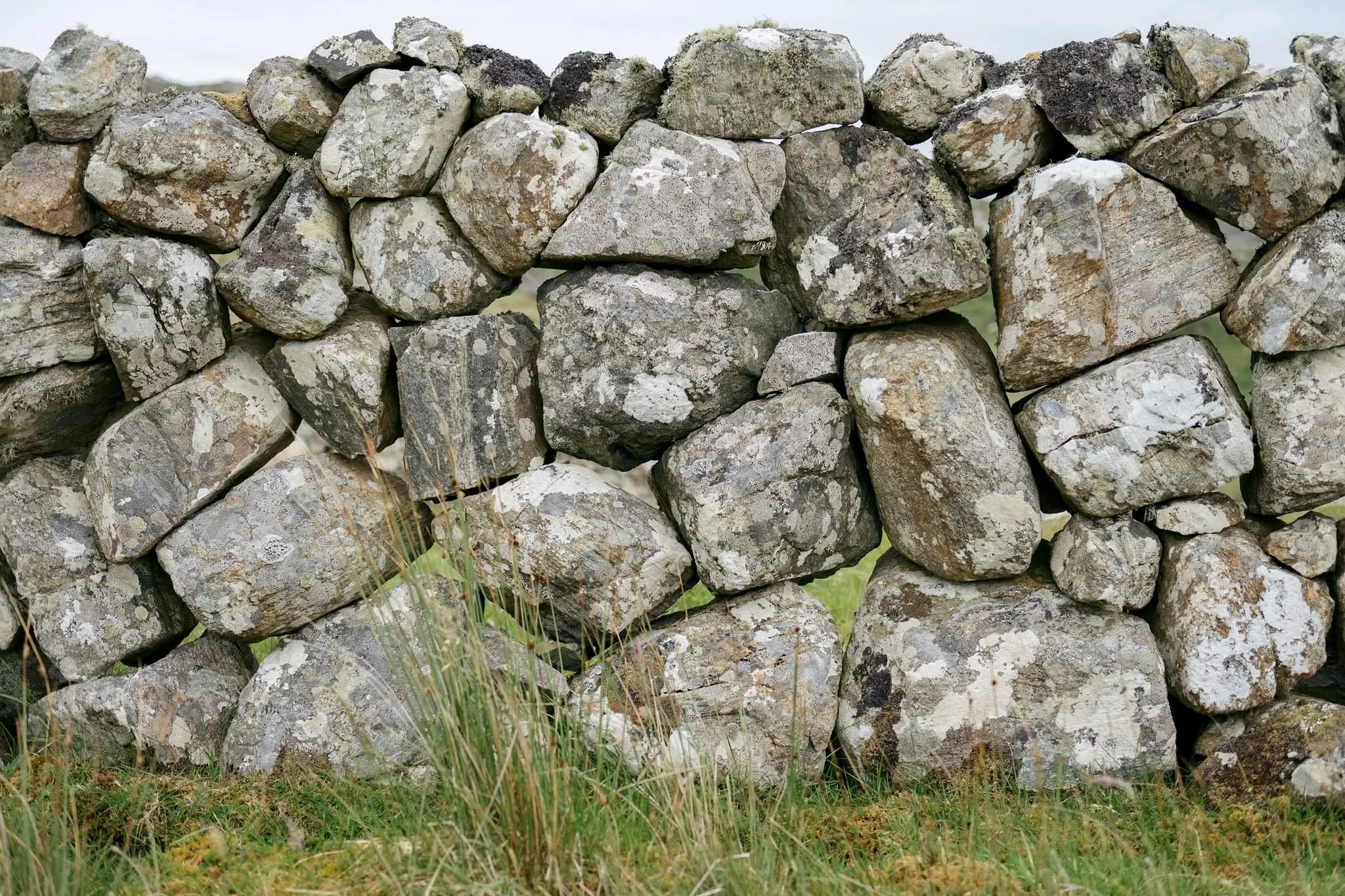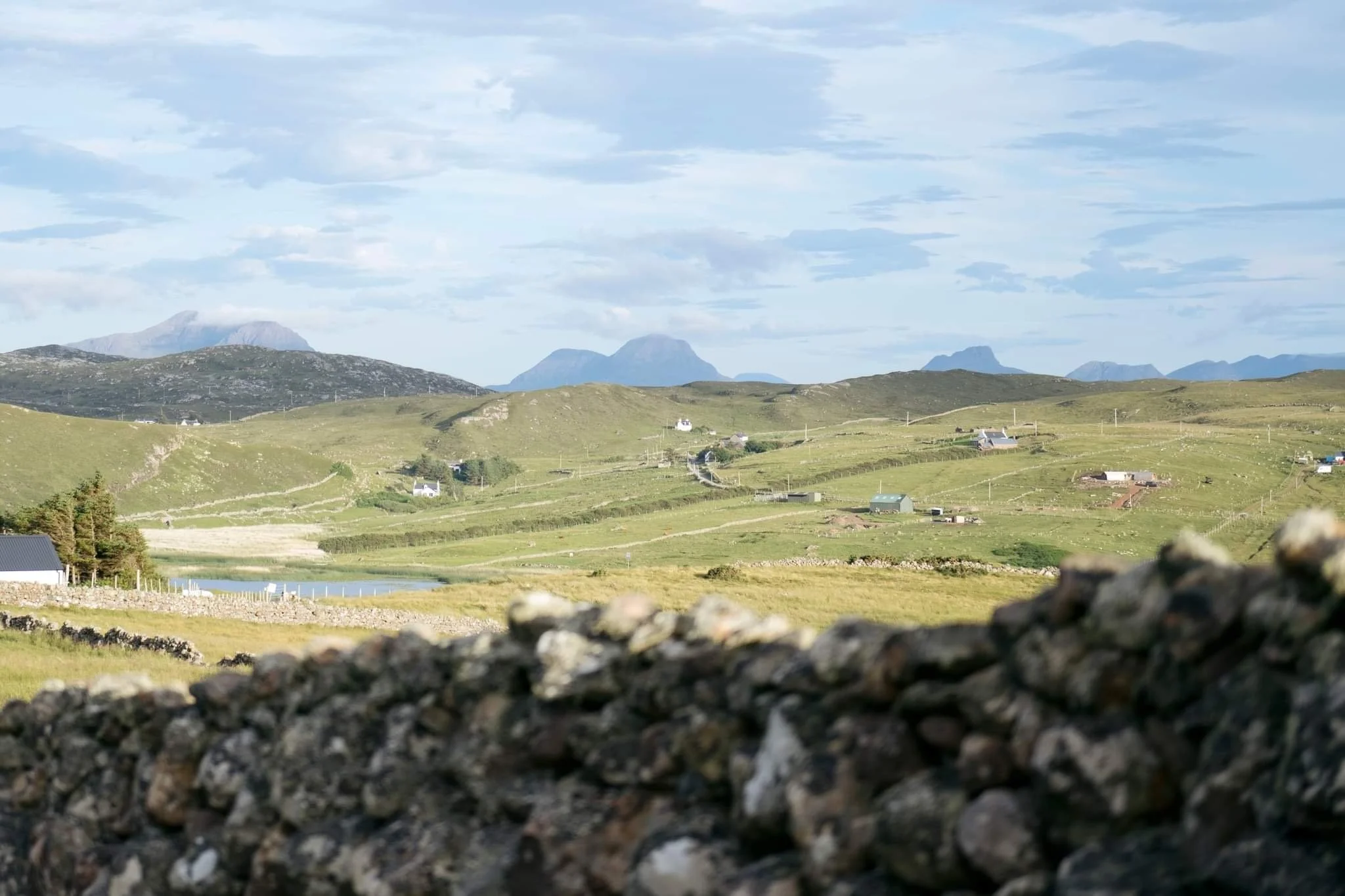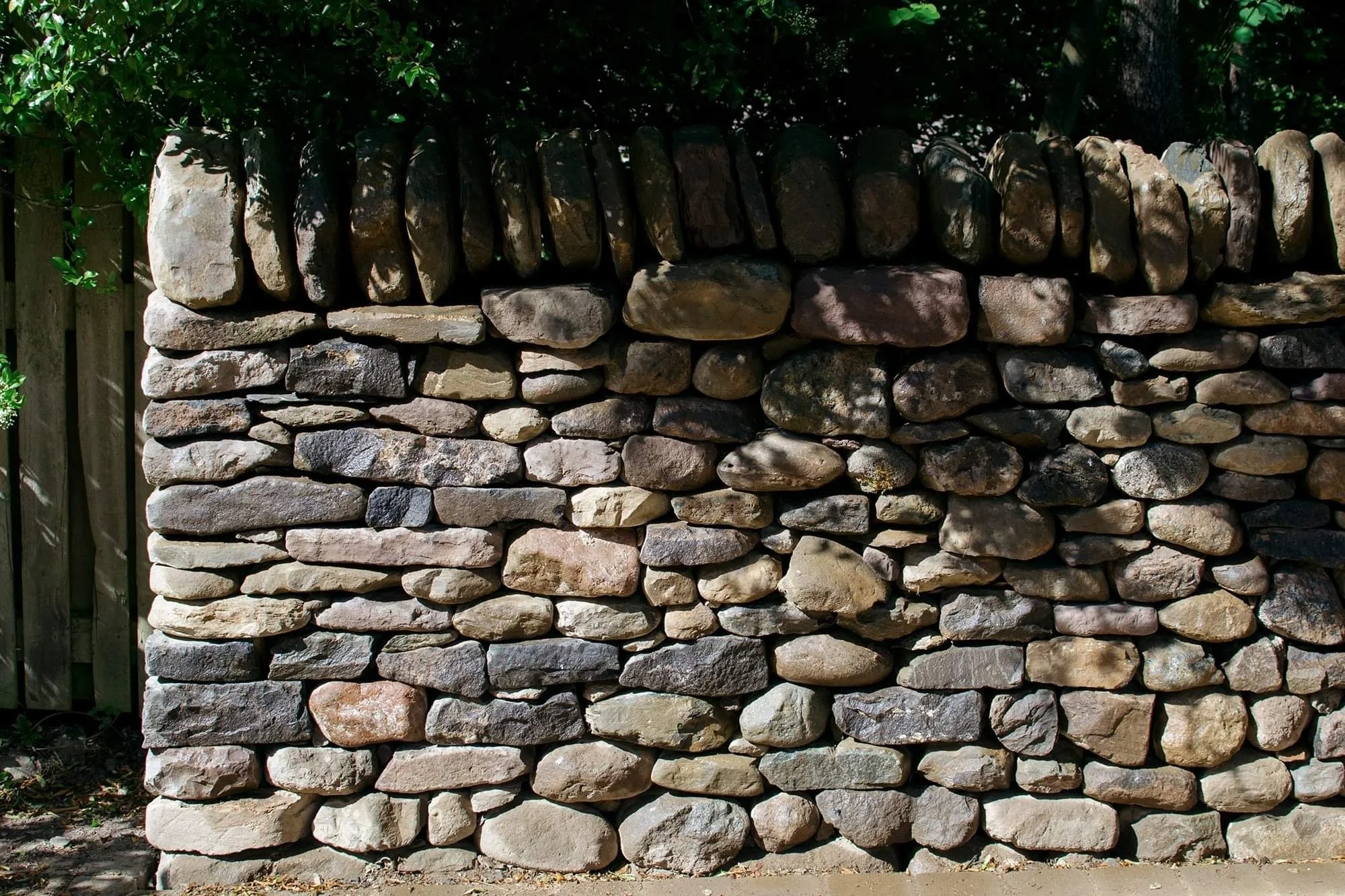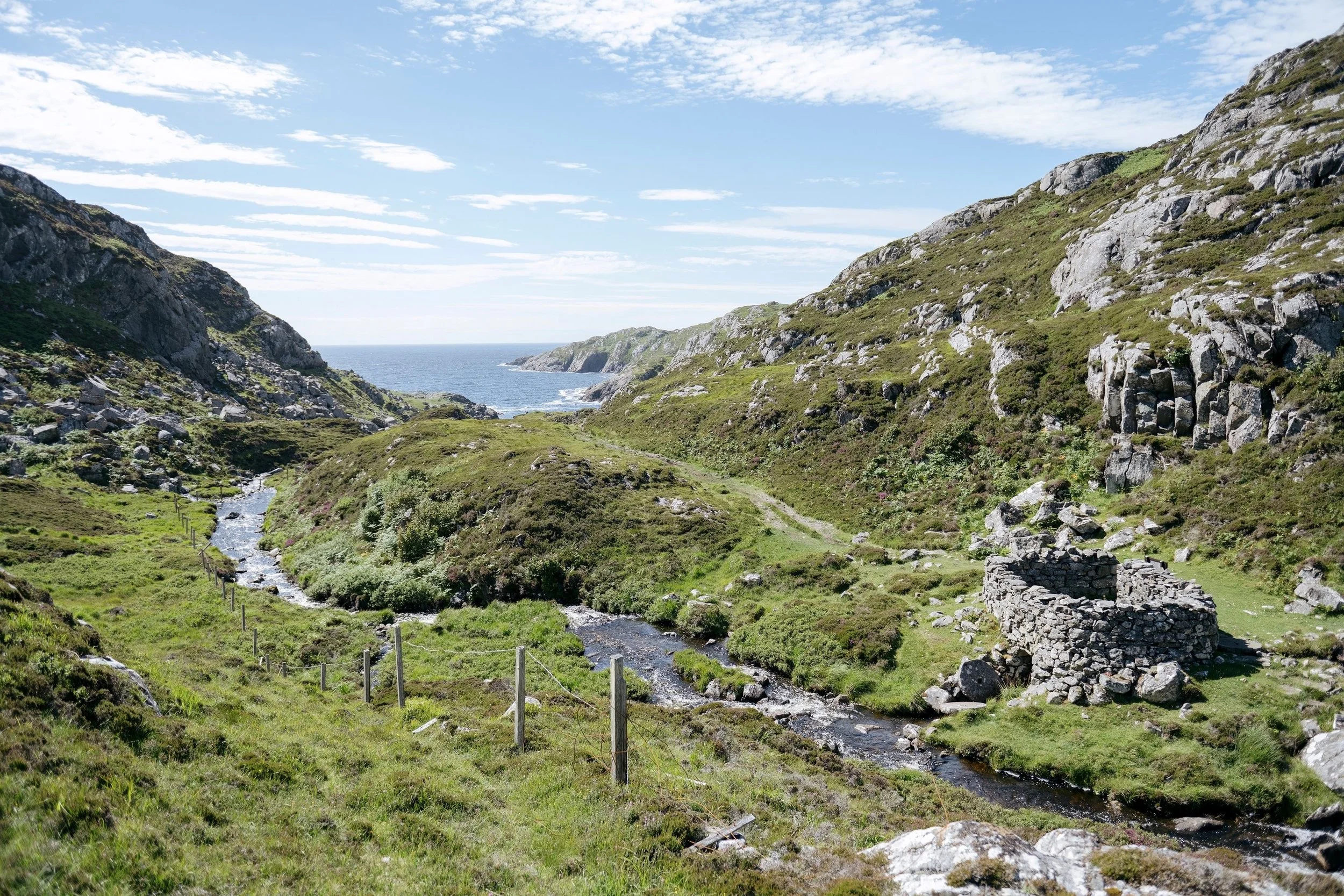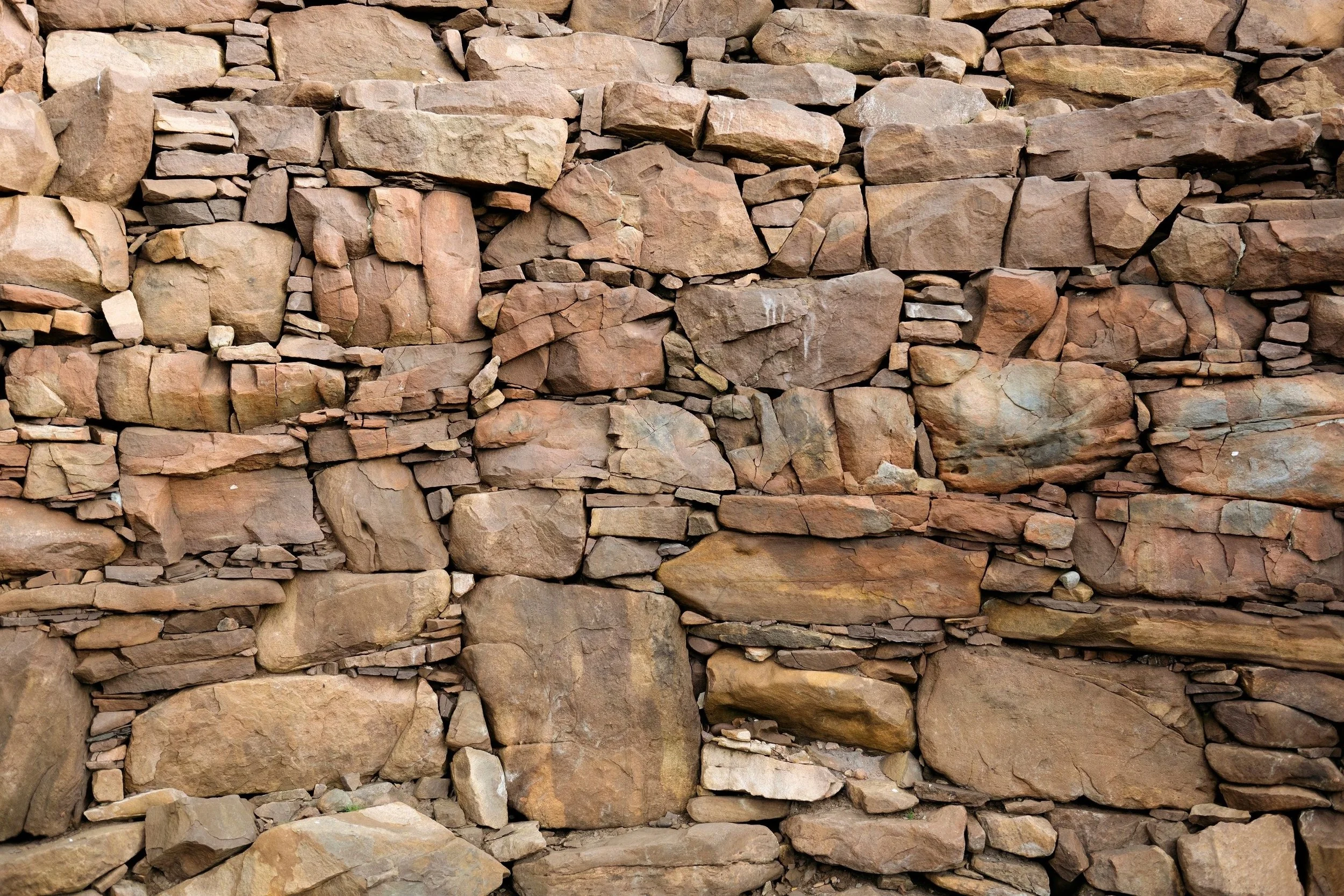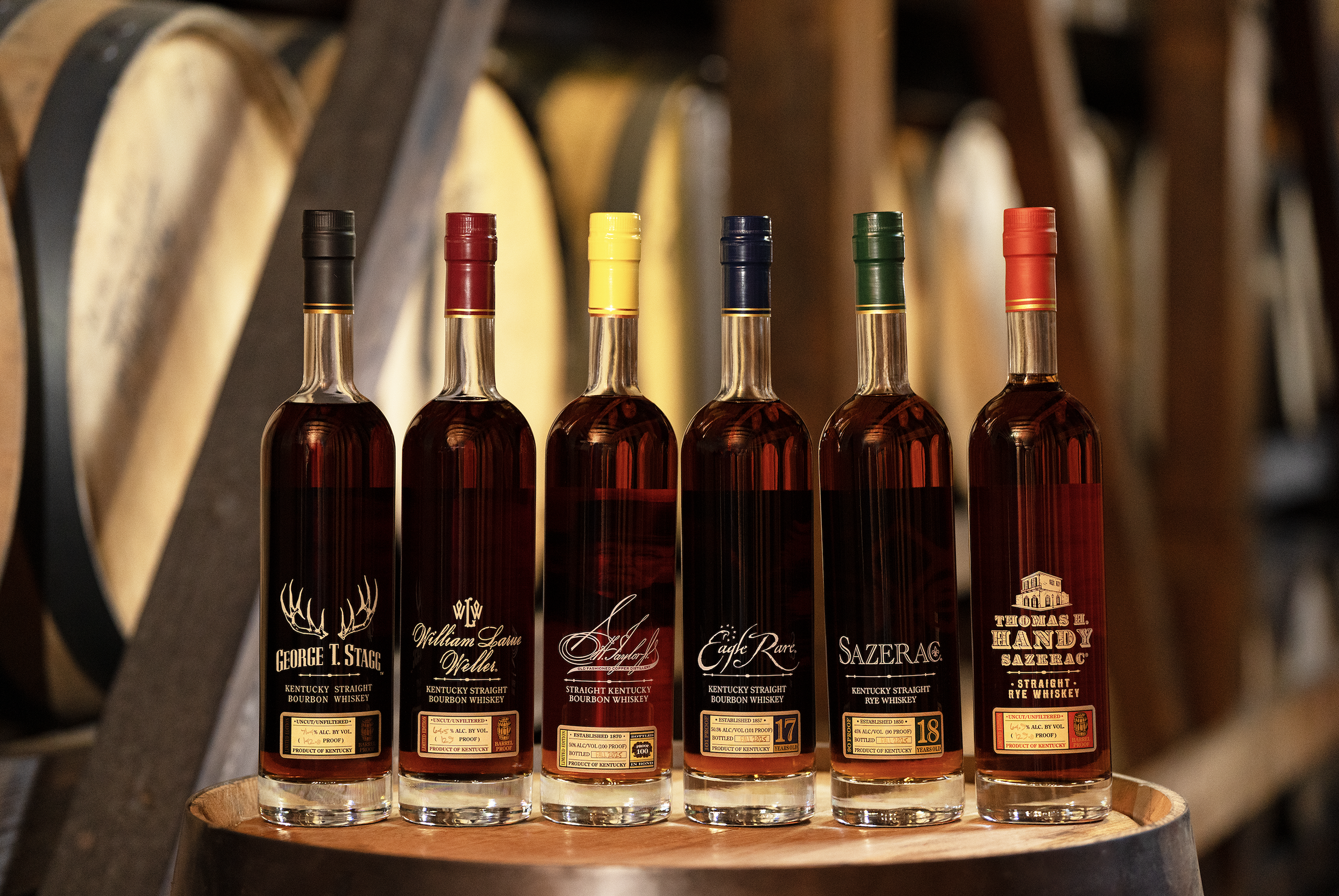The Wonder Waller
Sheep fank in Rannoch, Perthshire
After decades away from rural Scotland, and a deeply unhappy period in the city, Kristie de Garis moved to Perthshire and set about rebuilding her life. In a candid essay, she tells how drystone walling, and reconnecting with her past, helped her recover and envisage a simpler, more nourishing future. Photography by Kristie De Garis
Standing with my back to the sun, I’m pleased to feel the chill of the morning finally lifting. I consider removing my jumper but decide against it, instead using the brief shift in focus to put down the chisel and shake out my stiff hands. Pushing my hair out of my face with the backs of my fingers, I notice the smell of stone dust, metal and sweat, each distinct but mixing to create a pleasant mineral tang. Placing the chisel against the stone, I choose a line of darker colouration as my mark. Shifting my body into a more decisive stance, I raise my hammer and swing.
Shaping stone is something I approach cautiously. I don’t yet have the many years of experience required to predict how a stone will split, to almost intuit points of weakness within its form, to understand the nuances of every stone type. The basics of drystone are fairly easy to grasp, but the ability to quickly see the stone that works next to another, or developing an eye for visual balance and flow in the wall, these are the things that are developed over many years.
‘Pushing my hair out of my face with the backs of my fingers, I notice the smell of stone dust, metal and sweat, each distinct but mixing to create a pleasant mineral tang’
You don’t even need to watch a drystone waller work to know how experienced they are, you can hear it in the sounds of the hammer and chisel, and the metal on stone. Just a few years in, my hammer blows can still produce a superficial ‘ting’ and lack the depth of a more committed and knowledgeable ‘thunk’.
This time the stone splits, and, cleaving in two, reveals a dark motif on the newly exposed faces. At first I don’t know what I’m looking at, but as I run my fingers over distinct black ridges, I realise that this is a fossil, probably organic material, maybe bark. Working with stone on a daily basis, focussing on the task at hand, it’s very easy to forget that these building blocks were made by powerful geological forces aeons ago. In the sun, on this very average Tuesday morning, I am holding in my hands an impression of life that hasn’t seen the light of day for millions of years.
Single-skin dyke in Stoer, Assynt
These interactions with deep time seem to influence my outlook in a similar way to looking at the night sky. I’ve always been confused by how unconcerned others seem when looking at the stars and planets. Seeing Jupiter, Venus and The Moon in conjunction, I am forced to give myself to the incomprehensible scale of the universe, and I can’t recognise a constellation without thinking of how our ancestors saw the same shapes, and how it predates, and will outlast, us all. Stone provides me a similar clarity, but maybe even more so. Millions, sometimes billions, of years old, created by powerful natural forces, but unlike the stars, I can hold it in my hands, shape it with a hammer, and stack it in such a way, that someone three hundred years from now, will see the same stones, in the same places, and understand something about me and my intent.
Drystone (‘drystane’ in Scotland) is often regarded as a picture-postcard remnant of our past, a monument to the hard necessity of days long gone. Ubiquitous in Scotland and an enduring part of rural vistas, drystone often goes unnoticed, but ask anyone to imagine a rural landscape, and their mind will absolutely raise drystone structures within that scene.
Growing up in Caithness, I explored the flow country ( a rare and globally significant type of peatland that stretches across the two most northerly counties of Scotland ), clambered over stacked flagstone, and spent many childhood afternoons building with stone scavenged from the fallen walls and fanks around me. I loved everything about it, the smells, the sounds, and the way the stone felt in my hands, but as I grew, the natural desire to expand my horizons eclipsed my love for the land, and when I left Caithness, slamming the door behind me, I didn’t look back once.
‘As my mental health deteriorated, I often found myself thinking back to my childhood in Caithness. Attached to my memories of moss, peat and heather, stone and salt, was an incredible feeling of peace’
Young, open-minded and searching for my path forward, living in the city felt like what I was supposed to do. Where else do you fulfil your potential, find your purpose, and realise your dreams? On paper, Edinburgh ticked all the boxes, but in reality, I struggled to find what I was looking for, and over the years, I lost myself to disconnection and aimlessness. As my mental health deteriorated, I often found myself thinking back to my childhood in Caithness. Attached to my memories of moss, peat and heather, stone and salt, was an incredible feeling of peace. I wanted that again.
View over Assynt towards Suilven, with drystone wall in foreground
Cut to my mid-thirties, three years after the birth of my second daughter, and I’d settled in Perthshire with my family. The first few months in our new home, we dutifully visited the local landmarks at weekends, taking the kids along to see the salmon jumping at Buchanty Spout, climbing Kinnoull Hill and its early 19th century folly with the A90 twisting through the fields below us, and watching sticks thrown into the still, dark waters of the River Earn keep our pace before disappearing into the distance. Although perfectly pleasant, it felt superficial, like small talk, but the land and I weren’t just neighbours, thrown together in conversation due to our geographical proximity, we were old friends.
Determined to reconnect, I began to explore alone. This enabled me to walk out further, climb higher, and take my time in enjoying the company of the fields and hills around me. Fully immersed in my conversation with the land, I began to notice the drystone, and running my hands over the rough, Perthshire fieldstone walls, I felt that same quietude I’d known as a child.
‘Fully immersed in my conversation with the land, I began to notice the drystone, and running my hands over the rough, Perthshire fieldstone walls, I felt that same quietude I’d known as a child.’
Despite having a life-long appreciation for drystone, until I learned the craft, I’d never seen a wall being built. That’s the thing about drystone walls, they’re just there and feel like they always have been, as if they were created, not by diligent human hands, but by the land itself. Although the aesthetics of drystone seem to be universally appreciated, within our collective imagination the craft of drystone remains pretty unexplored.
Fieldstone garden wall built by The Drystone Company
No matter where you are in the world, North, South, East or West, if there is stone, there is drystone. A global phenomenon, recognised by UNESCO as part of the Intangible Cultural Heritage of Humanity, drystone has its roots in the earliest parts of human history and was used to build some of the very first structures on our planet. At its core, it’s a craft that’s all about doing what you can with what you have, and worldwide we can see examples of how the type of stone available, shaped the type of structures that were built. Here in Scotland we are lucky to have many incredible examples of drystone that represent thousands of years of Scottish history.
‘I spent a long time admiring the veins of snecks running between the larger stones, allowing my eye to follow the lines of the wall, and imagining those who made their home there 2000 years ago.’
Brochs (often called Duns on the West coast) were circular, drystone, hollow-walled, iron age structures found only in Scotland. Most brochs have fallen, making it hard to know what height they would have been originally, but one of our best examples, Mousa in Shetland, stands at over 13 metres tall, and Dun Telve in Glen Elg stands at 10.2 metres. Although Clachtoll Broch in Assynt is in a much heavier state of ruin, now standing at only two metres tall, it is one of my favourite examples of drystone in Scotland.
The ruins of Altanabradhan Mill, Assynt
When I visited Clachtoll, I spent a long time admiring the veins of snecks running between the larger stones, allowing my eye to follow the lines of the wall, and imagining those who made their home there 2000 years ago. Then I did that thing that many of us do, placing both hands on the stone, hoping to channel all the history and stories it had to tell. Sadly, the stones stayed silent, but drawing on my knowledge of drystone, I was still able to experience the structure from a perspective similar to those who had built it.
Despite the two-thousand years between us, not a lot of interpretation was necessary because this craft has stayed true to its ancient roots, and today, any drystone structure can still be built using only traditional techniques, the very same that were used to build Clachtoll Broch thousands of years ago. These days, we have access to tools that really help speed up the building process. Big tools, like diggers to clear earth or move stones that weigh many, many tonnes, and small tools like carbide chisels or hammers that make shaping stone quick and precise. No matter the tools that are used, every stone still goes into the wall by hand, each piece of hearting is placed with intent, stones into the wall length ways, one over two and two over one. Just like our ancestors did.
‘With a carbon footprint that is a fraction of that for other building techniques, drystone also provides a home for many animals, insects and plants, with each wall containing a diverse ecosystem.’
Having this direct connection to the past is wonderful, but in 2023 it also contributes to a particularly stark outlook. When I’m stacking stones, making sure to pack the hearting tightly, adding throughs for extra support, doing everything I can to increase the longevity of the wall, it’s hard not to project into the future, and these days I find that future to be looking more and more uncertain. When built properly, drystone can last hundreds of years and that sort of time scale really puts things into perspective in terms of the climate emergency. We really don’t know what life on our planet will look like even a few decades from now.
Despite the fact that drystone has unbeatable environmental credentials, we live within a culture that always seems to always be in a hurry, and drystone absolutely stands out as a slower, more deliberate process. With a life spanning hundreds of years, it also vastly outlives other structures.
Drystone walls on the winding back roads of Fife
Most of the walls being built today still use cement in some form, and that industry is responsible for a shocking 7%-8% of global carbon emissions (to put that in context, the global aviation industry accounts for only 2.5% of CO2 emissions). Built entirely without mortar, and using materials that were forged by geological forces millions of years ago, the only footprint drystone incurs is travel and, if needed, the transport of stone to site. With a carbon footprint that is a fraction of that for other building techniques, drystone also provides a home for many animals, insects and plants, with each wall containing a diverse ecosystem.
Immersing myself in this craft has taught me a lot about sustainability on a large scale, but also how to apply it within my own life. At its core sustainability is simply meeting current needs without compromising the ability to meet future needs, and over time, the intentional nature of drystone has worked the impatience (of which there was a lot) out of me. It has shown me that resilience is something I must carefully craft, and that I need to do as much as I can with what I have right in front of me. No more, no less.
Days spent walling have grounded me in methodical, conscious processes, and connected me to nature and my own body, in a way that I didn’t realise was possible. In that deepening relationship with myself and the land around me, the natural shifts that have taken place are essentially a simplification, a recognition of the necessary (and unnecessary). My wardrobe, once overflowing, and overwhelming, is now a reflection of my needs: comfort and durability. My social life, once busy, and burdensome, has been traded in for long walks alone and gardening, and my mental health, once disordered, and dismissed, is now considered and well managed. This carefully curated life is how I fulfil the needs of the now, without compromising my ability to meet the needs of the future.
Following a path of desire that is roughly etched in the grass, I veer off the main track at Sma’ Glen and ascend to the plateau between the River Almond and the hills above. Although it has been a dry day, the ground in the longer grass is still boggy, and I notice the familiar feeling of suction under my boots. Over the years, the hills above have shed rocks onto the grassy table below, and at first, it’s hard to see the structure within all that natural disorder. As I keep walking, the ruins make themselves known, twenty-two in total. Once a thriving township, now simple monuments, and all that remains of Craignavar.
The 2000 year old walls of Clachtoll Broch in Assynt
Making the most of what the land could provide, the stone for these homes would have been pulled from the ground beneath them. Thousands of stones in each structure, some huge, but each placed by hand. Looking at the stones in the still-standing corner of the gable end, I see what they saw in each one. I would have used these stones too. Some sections are low enough to see the two sides of the wall coming together and I reach down to pick up some hearting. Below is a large void, and I wonder if the hearting has been removed by curious hands like mine, or if they didn’t have enough to begin with. Maybe that’s why this section of wall has fallen further than others. I smile to myself. I feel as if I am speaking some ancient language, and I suppose I am. This is the magic of drystone, not just in how a home can be created from piles of unwilling stone, but in its deep and tangible connection to the past.
Kristie De Garis is a photographer, writer and drystone waller living in Perthshire, Scotland. She is writing her first book
A drystone walling glossary
Drystone Wall A stone wall built without mortar. In Scotland it is known as a Drystane Dyke.
Fank A drystone pen that encloses sheep. They are usually built in square, rectangular or circular shapes with one or two gates.
Hearting Small stones that sit between the two sides of the wall ‘locking’ them in place. Hearting (or packing) is one of the most essential parts of a drystone wall and every piece is placed by hand and with intention.
Snecks Small stones used to fill gaps between larger, irregular stone shapes or to bridge gaps in stone height. Often stacked on top of one another.
Trace When a stone is placed with length along the wall, rather than length in.
To see more of Kristie’s photography, writing and drystone work visit www.kristiedegaris.com /www.thedrystonecompany.com


